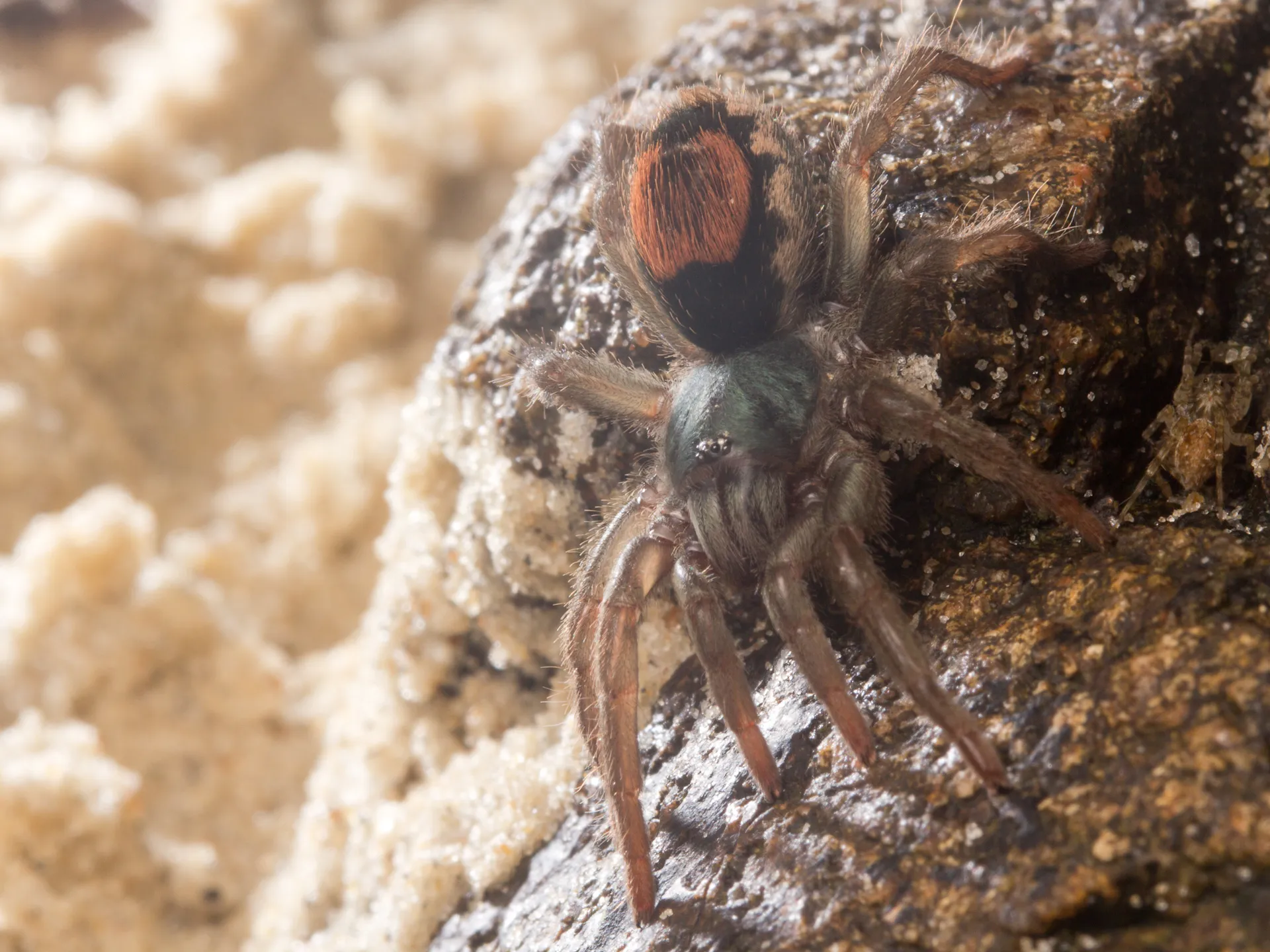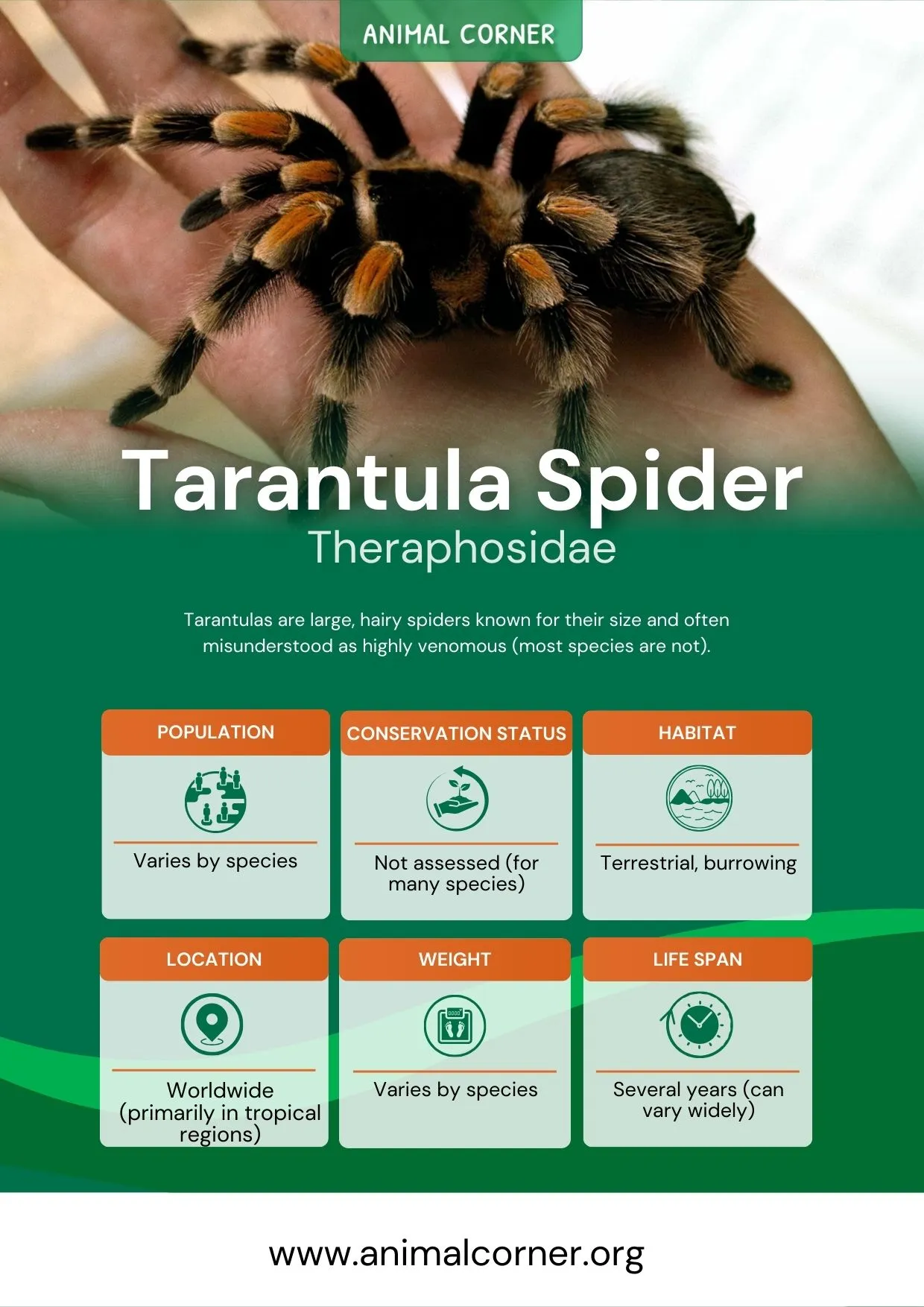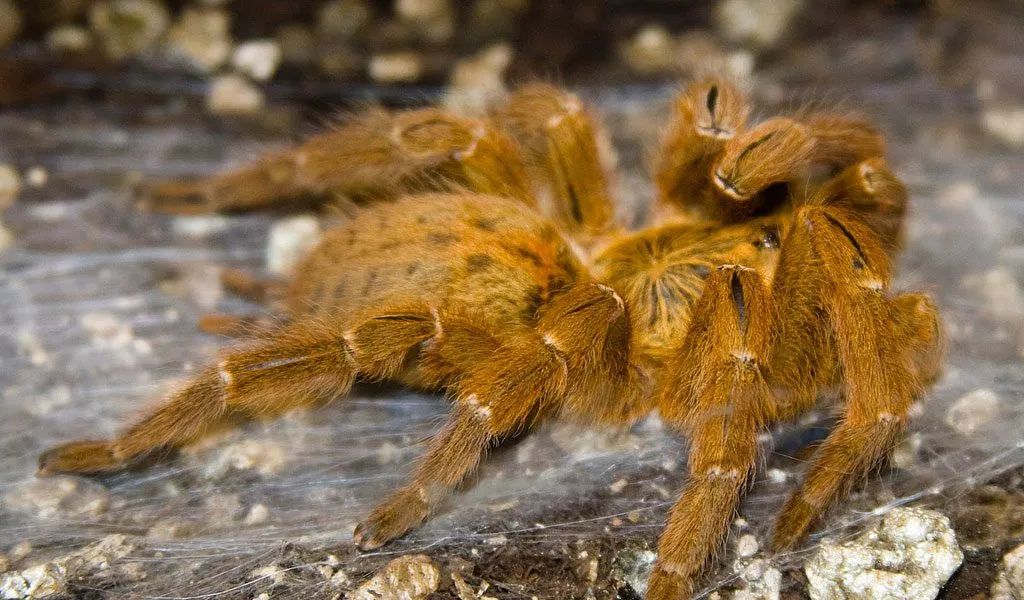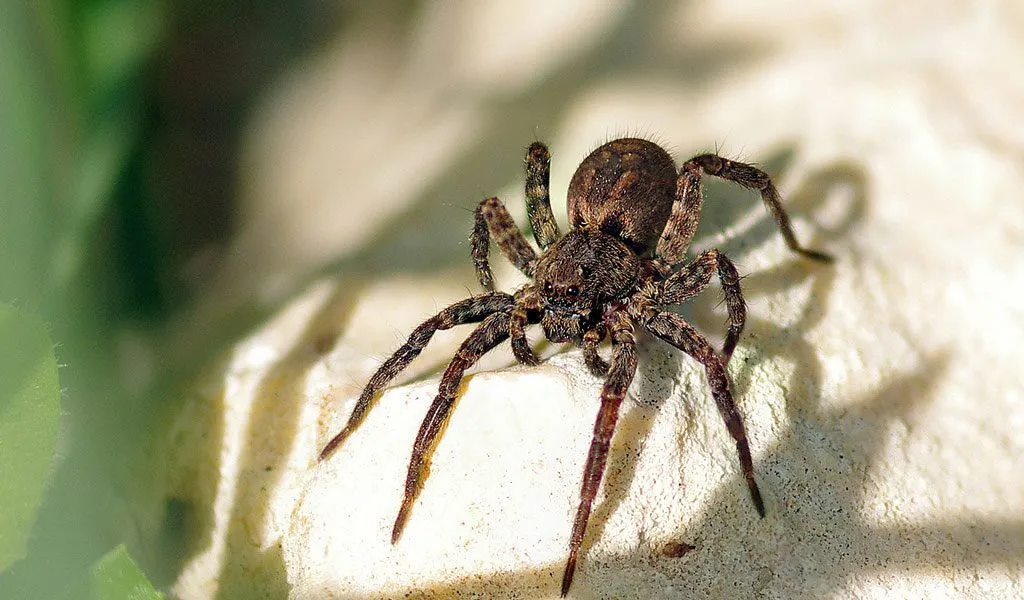What is a Tarantula Spider Bite
Tarantula spiders, despite their intimidating size and appearance, are generally not considered highly venomous to humans. However, their bites can still be a concern. A tarantula bite occurs when the spider’s fangs pierce the skin, injecting venom. The severity of a tarantula spider bite depends on various factors, including the species of the tarantula, the amount of venom injected, and the individual’s sensitivity. Bites are usually the result of the spider feeling threatened, such as when they are accidentally touched or handled improperly. While not typically life-threatening, it’s essential to understand the risks and know how to react appropriately to ensure your safety and well-being. This article will guide you through everything you need to know about tarantula spider bites, from identification to first aid and prevention, ensuring you can handle any encounter with confidence.
Identifying a Tarantula Spider Bite
Identifying a tarantula spider bite accurately is the first step in managing the situation. It’s important to distinguish a tarantula bite from other insect bites or skin irritations. The appearance and the symptoms that manifest can provide critical clues. Understanding these aspects can help you quickly assess the situation and take appropriate action. Keep in mind that the appearance of the bite and the ensuing symptoms can vary based on the individual and the spider species. Therefore, quick and accurate identification is important to proper care. Being familiar with what to expect can help you remain calm and respond appropriately.
Appearance of a Tarantula Spider Bite

A tarantula spider bite typically looks like two small puncture wounds, as the spider has two fangs. The area around the bite may be red, swollen, and inflamed. The size of the reaction can vary; some bites might only cause a small, localized reaction, while others might result in more significant swelling and redness. In certain cases, you might see a small amount of bleeding immediately after the bite, though this is not always the case. It’s essential to observe the bite site closely to monitor any changes. A photograph can be useful in tracking the progression of any reaction over time. If there’s a change in appearance, such as increasing redness, swelling, or the development of blisters, this should be noted and may indicate a more severe reaction.
Symptoms of a Tarantula Spider Bite
The symptoms following a tarantula spider bite are not always severe, but it’s still essential to be aware of what to expect. Common symptoms may include localized pain, similar to a bee sting, at the bite site. The affected area may become itchy, and there might be a burning sensation. Some individuals may experience muscle cramps, particularly in the area around the bite. In more severe cases, symptoms can include swelling, redness, and warmth around the bite. It is important to observe for systemic symptoms such as nausea, vomiting, dizziness, or difficulty breathing, which may indicate a more severe allergic reaction. The onset and intensity of symptoms can vary. Keep an eye on any changes in your condition and consult a medical professional if your symptoms escalate or cause concern.
Immediate First Aid for Tarantula Spider Bites
When dealing with a tarantula spider bite, immediate and appropriate first aid can help manage the symptoms and minimize any potential complications. The primary goal is to reduce pain, prevent infection, and monitor the individual for more severe reactions. Knowing the correct steps to take can provide quick relief and prevent further complications. It’s crucial to act quickly and efficiently, as prompt first aid can make a significant difference in the recovery process. Following the guidelines below will help you handle the situation effectively and responsibly. Remember, if you’re unsure or if symptoms worsen, you should seek professional medical advice.
Washing the Wound

Immediately after being bitten by a tarantula, the first step is to thoroughly wash the bite area with mild soap and water. This helps remove any residual venom from the surface and prevents the entry of bacteria, which could lead to infection. Gently cleanse the area, taking care not to scrub aggressively, as this could cause further irritation. Use lukewarm water and a gentle soap, avoiding harsh chemicals or perfumed products. After washing, rinse the area thoroughly to ensure all soap residue is removed. Pat the area dry with a clean towel. The goal is to cleanse the wound without causing additional trauma, setting the stage for further care and management.
Applying a Cold Compress
To reduce pain, swelling, and inflammation, apply a cold compress or ice pack to the bite site. Wrap the ice pack in a cloth to prevent direct contact with the skin, which can cause frostbite. Apply the cold compress for 10 to 20 minutes at a time, with breaks in between to allow the skin to return to its normal temperature. Cold therapy helps constrict blood vessels, reducing blood flow to the area and alleviating inflammation. This can significantly diminish pain and swelling, enhancing the overall comfort. This simple step is a key part of first aid and can provide noticeable relief. Make sure to monitor the skin for any adverse reactions to the cold, such as excessive redness or blistering, and adjust the application accordingly.
Elevating the Affected Area
Elevating the bitten area above the heart level can help reduce swelling and promote blood flow away from the injury. Gravity assists in minimizing swelling by helping to drain fluid from the affected area. If the bite is on an arm or hand, raise it using pillows or cushions. If the bite is on a leg or foot, lie down and prop the leg up. Continuing this elevation, especially during the initial hours after the bite, can significantly lessen swelling. The consistent elevation of the affected area is an easy yet effective method for controlling inflammation and boosting the recovery process. This straightforward step can make a noticeable difference in the comfort and recovery time.
When to Seek Medical Attention

While most tarantula spider bites are not life-threatening, there are times when medical attention is necessary. Recognizing the signs that necessitate a visit to a doctor is essential for your health. Knowing when to seek medical assistance can prevent complications and ensure you get the right care. Prompt medical intervention can be crucial for those experiencing significant reactions or systemic symptoms. Immediate attention can often mitigate the severity of the situation and guarantee the best possible result. Being informed about the circumstances that call for medical care is a responsible way to manage your safety and well-being.
Severe Allergic Reactions
In rare instances, people may experience severe allergic reactions to a tarantula spider bite. Symptoms of a severe allergic reaction, also known as anaphylaxis, include difficulty breathing, swelling of the throat, dizziness, rapid heartbeat, hives, and loss of consciousness. Anaphylaxis is a life-threatening condition that requires immediate medical attention. If you or someone you know experiences any of these symptoms after a tarantula spider bite, call emergency services immediately. Do not hesitate to seek medical help, as rapid treatment, which may include an epinephrine injection (e.g., an EpiPen), can be critical to survival and recovery. Recognize these severe symptoms and seek prompt medical intervention.
Signs of Infection
It’s crucial to watch for signs of infection at the bite site. Infection can occur if bacteria enter the wound. Symptoms of infection include increased redness, swelling, warmth, and pus. You may also experience fever, chills, and a general feeling of being unwell. If you observe these symptoms, seek medical attention promptly. An infected bite could worsen if left untreated, and early diagnosis and treatment with antibiotics can prevent more serious complications. Seek medical advice to handle infection effectively and prevent health risks. Early intervention is key to prevent a more serious condition, so recognizing these signs is essential.
Long-Term Effects and Complications of Bites

Generally, tarantula spider bites do not lead to long-term health effects. However, some complications can occur if the bite isn’t properly treated or if the individual has a severe reaction. In rare cases, there may be lingering pain, numbness, or other sensory changes at the bite site. Infection can also lead to more severe conditions, such as cellulitis or sepsis, if not addressed promptly. Additionally, individuals with allergies to the spider venom might experience long-term sensitivities or health issues. Regular monitoring of the bite site and seeking medical advice when necessary can mitigate risks. Keeping informed on possible complications and knowing when to seek professional medical help will help make a complete recovery and prevent lasting effects.
Preventing Tarantula Spider Bites
Preventing tarantula spider bites is crucial, especially if you live in areas where they are common or if you handle these spiders. Proper precautions can substantially reduce the likelihood of being bitten and protect your well-being. Understanding tarantula behavior and handling them safely are key to preventing incidents. Creating a safe environment around your home or pet enclosure is also important. By following the tips below, you can enjoy a safer environment and minimize the risk of bites. Being proactive in your approach to prevention will ensure you reduce your risk. This safeguards your health and helps ensure your comfort, especially in areas where tarantulas are present.
Understanding Tarantula Behavior
Understanding tarantula behavior is essential to preventing bites. Tarantulas are generally not aggressive, but they will bite if they feel threatened. They may bite if they are startled, mishandled, or if they are protecting themselves or their eggs. Learn to recognize signs of stress, such as a raised posture or flicking of hairs. Avoid sudden movements or loud noises around them. Being aware of the spider’s cues can help you avoid triggering a defensive response. Handle tarantulas with care, and never try to grab them. Observe their behavior. This knowledge will help you act in a way that avoids causing stress or fear, reducing the likelihood of getting bitten. Being informed on their behaviour will make your encounters safe and controlled.
Safe Handling of Tarantulas

If you handle tarantulas, do so with extreme caution and safety measures. Use appropriate tools, such as long tongs, to move them, especially if you are not familiar with their behavior. Avoid direct contact whenever possible. If you must handle them, do so carefully, supporting their body and avoiding sudden movements. Wash your hands thoroughly before and after handling. Never handle tarantulas if you have any open wounds on your hands. Make sure the environment is controlled and secure, avoiding situations where the spider might feel cornered or threatened. When handling, always be mindful of their movements and be prepared for a potential defensive response. Ensure a safe and stress-free handling environment to minimize the chances of a bite.
Creating a Safe Environment
Creating a safe environment for yourself and your tarantula can significantly reduce the chances of a bite. If you have tarantulas as pets, ensure their enclosure is secure, and they can’t escape. Regularly inspect the enclosure for any damage or potential escape routes. Keep your home clean and free of potential hiding places for tarantulas. Be cautious when working in areas where tarantulas might be present, such as gardens or sheds. Wear protective clothing, such as gloves and long sleeves, when gardening or working in these areas. Being proactive and mindful of your surroundings can help prevent accidental encounters. Regular safety practices, such as securing their habitats and maintaining a safe home environment, will lower any risks.
